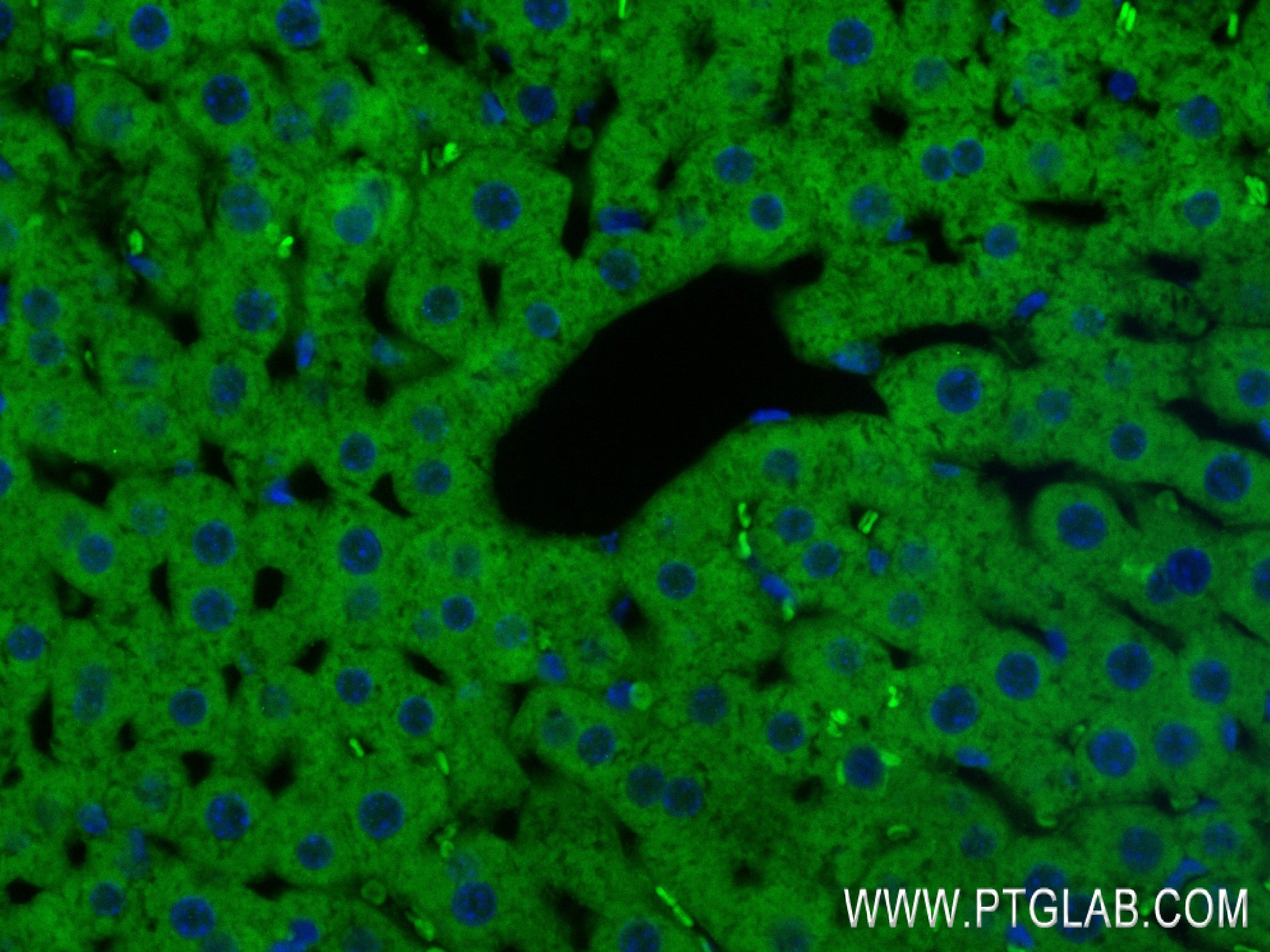Caspase 1 Rekombinanter Antikörper
Caspase 1 Rekombinant Antikörper für IF-P, ELISA
Wirt / Isotyp
Kaninchen / IgG
Getestete Reaktivität
human, Maus
Anwendung
IF-P, ELISA
Konjugation
Unkonjugiert
CloneNo.
241966A3
Kat-Nr. : 84752-1-RR
Synonyme
Geprüfte Anwendungen
| Erfolgreiche Detektion in IF-P | Mauslebergewebe |
Empfohlene Verdünnung
| Anwendung | Verdünnung |
|---|---|
| Immunfluoreszenz (IF)-P | IF-P : 1:125-1:500 |
| It is recommended that this reagent should be titrated in each testing system to obtain optimal results. | |
| Sample-dependent, check data in validation data gallery | |
Produktinformation
84752-1-RR bindet in IF-P, ELISA Caspase 1 und zeigt Reaktivität mit human, Maus
| Getestete Reaktivität | human, Maus |
| Wirt / Isotyp | Kaninchen / IgG |
| Klonalität | Rekombinant |
| Typ | Antikörper |
| Immunogen | Peptid |
| Vollständiger Name | caspase 1, apoptosis-related cysteine peptidase (interleukin 1, beta, convertase) |
| Berechnetes Molekulargewicht | 404 aa, 45 kDa |
| GenBank-Zugangsnummer | BC062327 |
| Gene symbol | Caspase 1 |
| Gene ID (NCBI) | 834 |
| Konjugation | Unkonjugiert |
| Form | Liquid |
| Reinigungsmethode | Protein A purfication |
| Lagerungspuffer | PBS with 0.02% sodium azide and 50% glycerol |
| Lagerungsbedingungen | Bei -20°C lagern. Nach dem Versand ein Jahr lang stabil Aliquotieren ist bei -20oC Lagerung nicht notwendig. 20ul Größen enthalten 0,1% BSA. |
Hintergrundinformationen
CASP1(caspase-1) is also named as IL1BC, IL1BCE and belongs to the peptidase C14A family. It is a cysteine protease that regulates inflammatory processes through its capacity to process and activate the interleukin-1-beta (IL1B), IL18, and IL33 precursor proteins. The active caspase-1 can increase cellular membrane permeability and intracellular calcium levels, which facilitates lysosome exocytosis and release of host antimicrobial factors and microbial products (PMID:21804020). It has 5 isoforms produced by alternative splicing.
Protokolle
| PRODUKTSPEZIFISCHE PROTOKOLLE | |
|---|---|
| IF protocol for Caspase 1 antibody 84752-1-RR | Protokoll herunterladen |
| STANDARD-PROTOKOLLE | |
|---|---|
| Klicken Sie hier, um unsere Standardprotokolle anzuzeigen |


